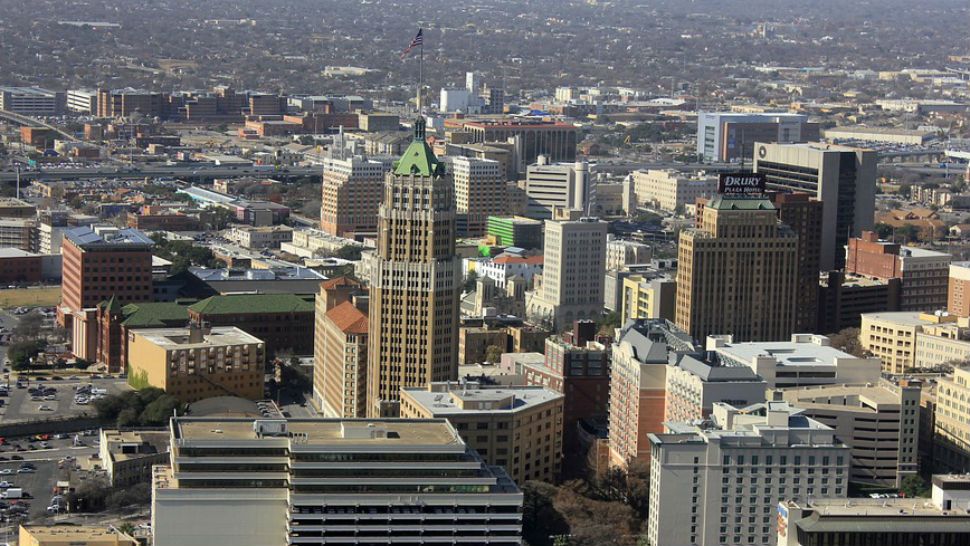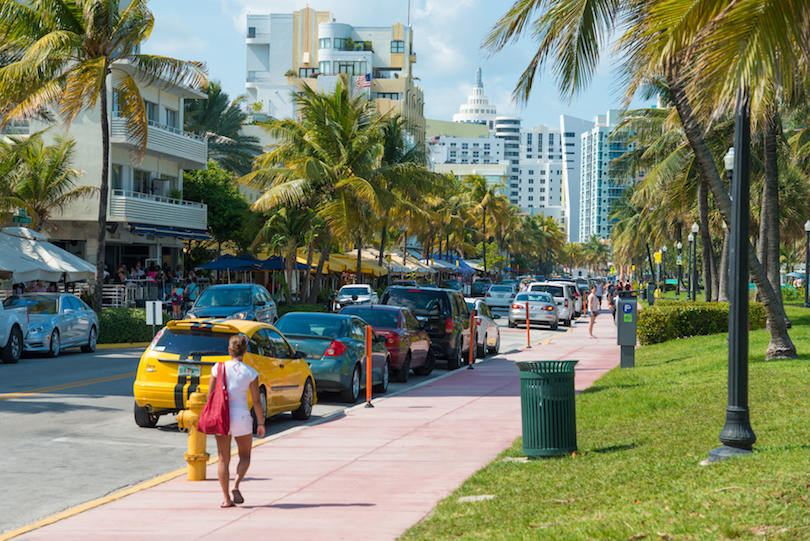If you are searching for the Fastest Growing Cities in Texas, then you are on the right page. The rate at which the population, land area, or substantial land usage increases is referred to as urban growth.
It can also be referred to as the expansion of metropolitan areas or cities, and it dates back to between 5000 and 6000 B.C., in part because of the migration of people from rural to urban areas, which are areas with a high human population, economic activity, and infrastructure. Particularly in the 19th century, there was actual urban expansion.
And since 1800, the urban revolution has grown quickly, reaching new heights in modern world history. Urbanization, often known as urbanism, is a term used to describe the increasing percentage of people living in urban areas like cities, suburbs, towns, and contributions. It is closely related to urban growth.
Therefore, urban expansion is used as a gauge for the economic health and development of a nation or region.
Numerous elements, including resource abundance, the development of infrastructure, commerce, education, and mining, among others, frequently have an impact on the growth of metropolitan regions.
Causes of Urban Growth in Cities
The following are the various causes of urban growth in cities:
- Presence Of Functional Administrative And Social Support Offices
In an urban center, the presence of administration dominance encourages growth. People are influenced to reside in these places because they have access to superior governance and social amenities including security, sanitization, housing, education, and healthcare. Today, many cities host offices for various administration and governance responsibilities.
- Mining and Investments
Urban regions continue to expand economically when more urban areas become prosperous and successful as a result of mineral discoveries, resource exploitation, agricultural endeavors, or commercial operations.
Due to the abundance of employment opportunities in urban regions, societies continue to be fiscally liberal. More investors are drawn to invest in these cities as a result, fostering their growth.
Related: How to Become a Pilot in Texas-10 Best Steps
- Modernization And Change In The Manner Of Life
People are drawn to cities in large part due to transformation and modernity. People tend to think they can live a more pleasant existence in cities as technology advances along with more advanced infrastructure, liberation, communication, dress code, and other social services supplied.
People readily accept changes in lifestyles, such as in clothes, attitudes, habits, and viewpoints, in developing metropolitan areas. As a result, more people are drawn to the cities, which keep expanding every day.
- Asymmetrical Spatial Development
There are developed regions and less developed regions in many different nations. People frequently relocate to more developed places.
Sometimes, due to the facilities and chances afforded in metropolitan regions, urban centers (cities) are more developed than rural areas. As a result, the population and size of the metropolitan region will grow automatically over time.
Topographic Considerations
The development of a city can be significantly impacted by the geography of a region. It is typically simple to grow and develop in a location with an appropriate terrain. Excellent topographical locations are easily expanded and enhanced, which attracts more people to live there.
- City Planning Guidelines
Urban planning often compels local officials to come up with sustainable city-building strategies, including sensible town growth and expansion plans.
It serves as a manual for maximizing a city’s potential by raising its living standards, fostering its economic growth, and enhancing the well-being of its citizens as a plan for turning vision into reality.
Related: 10 Best Veterinary Schools in Texas-Tuition & Requirements
- Access To Facilities For Education And Recreation
Urban regions are where the majority of colleges, technical institutes, elementary schools, and training facilities are located. The majority of libraries are also found in urban areas. Cities are where the examination councils and recruiting agencies are located.
It is obvious that the majority of students and adult learners are drawn to the town because of the area’s convenient access to higher education due to the location of these institutions. Urban locations also have opera and amusement theaters, which attract more people there.
- Advancements In Communication And Transportation
Local transportation was inadequate when factories were first built, forcing industrial workers to live close to where they worked. Cities were divided into residential areas, market areas, industrial areas, slum regions, and so forth.
Population growth caused housing shortages and the enlargement of existing communities’ boundaries.
People today prefer to live close to where they work, not because of bad transportation, but rather to reduce travel time and avoid traffic on the way to work. Active transportation facilitates communication, transit, and convenient accessibility, making communities more livable.
- Commercialization
While industrialization has been crucial to the expansion of urban areas, trade and commerce have also had a significant impact. Cities like Athens, Sparta, and Venice were thriving trade hubs in antiquity.
Today’s commercial operations in urban and industrial areas draw an increasing number of people as shoppers and employees, fueling the expansion of towns and cities.
For the purpose of selling their goods and in search of greater profits, businesspeople choose to travel to cities. Urban regions continue to draw more and more people because of the economic pull they offer.
- Migration
A significant factor in an area’s population growth is immigration. Many people are compelled to relocate to urban regions in quest of employment, educational opportunities, and housing. People have also been drawn to urban regions by inadequate financial and social infrastructure.
- The Always Growing Population
The rate of births and deaths determines how quickly an area has grown naturally. In locations where births outnumber deaths, population growth is inevitable. Young individuals who move to towns and cities frequently do so in quest of better housing, employment opportunities, or educational opportunities.
Due to their high rate of reproduction, young people proliferate swiftly and eventually look for places to reside in urban areas. Now, let’s look at the Fastest Growing Cities in Texas in detail.
The List of Fastest Growing Cities in Texas
In Texas, everything actually is bigger, especially the population. The Census Bureau’s December 22, 2020 report shows that from July 1, 2019, and the same day in 2020, the population of Lone Star State increased by roughly 374,000.
With approximately 28 million residents, Texas has the second-largest population in the USA.
Dallas-Fort Worth has had the nation’s fastest population growth, adding 131,767 people in the past ten years. With 7.5 million residents, the area is presently the fourth-largest metropolitan area in the nation.
The rise in enterprises interested in new sites and headquarters is what’s driving this massive growth. A business-friendly environment has been actively created by the state administration.
Numerous large firms have established hubs or headquarters in the state, including SBC Communications, Dell Technologies, FireFly Space Systems, and others.
Cities all around the state have experienced unprecedented growth as a result of this rapid population rise. Here are some of the Texas cities that are expanding the quickest.
Round Rock
Round Rock, located in Williamson County to the north of Austin, is one of Texas’s fastest-growing communities. It gives locals a dense suburban feeling.
There are numerous parks in Round Rock. The city is home to numerous families and young professionals and has highly esteemed schools. Most people live in their own homes.
The population of Round Rock has increased 33.3 percent during the past ten years to 133,372.
The average property in Round Rock costs $416,000 to buy, while a month’s rent there is $1253. The typical yearly income in the city is $80,637, and it is the seventh fastest rising in Texas.
Conroe
Conroe experienced the nation’s fastest growth in 2017. People relocate from Houston to Conroe in search of more affordable, brand-new homes and better access to the outdoors. Since 2000, Conroe’s population has more than doubled and is still expanding at a historic rate.
Conroe now has a total population of 92,648, increasing 39.3 percent over the previous ten years. The median income for a household is $59,189. The city has a 5 percent cheaper cost of living than the national average. Conroe has a typical home price of $261,000 and a median rent of $1137.
Cedar Park
Only 30 minutes separate downtown Austin and Austin Bergstrom International Airport from Cedar Park. The city offers major city conveniences with a relaxed, small-town feel. WalletHub ranked Cedar Park as one of the greatest small cities in the US to live in.
The estimated population of the city in July 2019 was 79,462, up 44.2 percent over the previous ten years. The city’s typical household income is $104,019.
In Cedar Park, a house will cost you $464,000. The poverty rate is under 5%, and the per capita income is $41,596. The city was ranked third in terms of affordability in Texas by Market Watch.
Related: 5 ACCRED Best Online Law Schools In Texas-How To
McKinney
Less than 30 minutes separate McKinney’s atmosphere and personality from downtown Dallas.
This historic community with family-owned businesses is one of Texas’s fastest-growing communities and is regarded as one of the most livable cities in the country.
While the unemployment rate in McKinney is 3.5 percent, jobs have increased by 3.3 percent. The population of McKinney is 182,055, up 51.9% in the previous nine years.
McKinney was the third-fastest growing city in the US as of May 2017. In McKinney, the median price of a property is $397,000, while the median monthly rent is $1,361.
New Braunfels
Beautiful New Braunfels is located in the Texas Hill Country. North of San Antonio is where this summer oasis is located.
A significant military presence is ensured by four neighboring US Air Force stations.
With a full complement of museums and cultural resources, sports teams, transportation options, and entertainment venues, the city offers a laid-back vibe.
The population of the city has increased by 56.4 percent over the last nine years. As of 2020, New Braunfels’ unemployment rate is 3.0 percent. Jobs in New Braunfels have increased by 1.7%. The median home price in New Braunfels is $313,000, while the typical monthly rent is $1,247.
Frisco
With a population of 177,020, Frisco is a suburb of Dallas located 30 miles to the north.
With a population rise of 71.1 percent during the previous nine years, it is one of the cities with the greatest growth rates in the country.
Money magazine ranked it as the finest location to live in America in 2018.
Frisco is rated well for walkability and boasts well-regarded public schools. The crime rate is lower than in neighboring areas, and the streets are safe.
The median family income in Frisco is $127,133. Homes in Frisco cost $493,000 on average. In Frisco, the average monthly rent is $1,500.
Leander
The population of Leander, which is only 30 minutes northwest of downtown Austin, has increased significantly in the last ten years.
The majority of people live in their own homes, and Leander gives residents a rural vibe. Since 2010, the city has expanded by 128%, reaching 73,000 in June 2020.
is $1,396 on average, while the typical cost of a property is $420,000.
Fulshear
Fulshear’s population increased by more than 1,386% between 2010 and 2020, turning the area into a sizable suburb from a relatively unknown one.
The population of Fulshear doubled in size numerous times during the last ten years, going from 1,134 in 2010 to 16,856 in 2020.
Iowa Colony
The (formerly extremely small) suburb of Iowa County is now Texas’s second-largest city in terms of population growth.
A population rise of 596.9%, from 1,170 to 8,154 between 2010 and 2020, was seen in the area.
Liberty Hill
The remote hamlet of Liberty Hill is tucked away in the Texas Hill Country and is surrounded by natural beauty and rolling hills.
communities are taking notice of the city’s breathtaking scenery. The population of Liberty Hill increased from 967 to 3,646 between 2010 and 2020.
indicates a 277% increase in the population overall.
Knollwood
Knollwood, another significant Texan community that experienced a population increase between 2010 and 2020, is known for its hot, muggy summers and moderate winters.
Only 226 people called the region home in 2010. This number increased to 764 by 2020, growth in the population of 238.1% overall.
Related: 12 Best Nursing Programs in Texas Online-Tuition & Requirements
Prosper
Prosper, a farming-focused community that describes itself as a “village where everyone matters,” experienced population growth between 2010 and 2020.
Just 9,423 people called Prosper their home in 2010. 30,174 inhabitants of the state of Texas called Prosper home by the year 2020, an increase in the population of 220.2%.
Montgomery
Montgomery, known as the “Birthplace of the Texas Flag,” is one of Texas’s communities with the highest population growth because of its location and abundance of scenic natural areas.
Montgomery’s population increased by 213.7% between the years 2010 and 2020, from 621 to 1,948 inhabitants.
Hackberry
Hackberry’s population increased by 207.1% between 2010 and 2020, from 968 to 2,973.
Northlake
Northlake, which is about 10 miles southwest of Denton had 1,724 residents in 2010. By the year 2020, the population of the city had increased to 5,201 people, a growth rate of 201.7% overall.
Melissa
Melissa, which dates to the middle of the 19th century, was formerly well-known as a prominent agricultural shipping location.
However, people nowadays are moving to Melissa in droves in search of work and a reduced cost of living in the Dallas region.
Melissa’s population increased by 196.1% between 2010 and 2020, from 4,695 to 13,901.
Palmview
The southern city of Palmview is the last expanding region on our list. Palmview’s population increased from 5,460 to 15,830 people between 2010 and 2020. Overall, this indicates a growth rate of 189.9%.
Which is the Fastest Growing City in Texas?
In 2022, a new study puts Austin as the second-fastest-growing city in the United States.
Which City In Texas Are People Moving To?
The major urban areas of Houston, Dallas, Austin, and San Antonio have experienced the highest population growth rates.
Another indicator, the amount of net domestic migrants, places Texas #1. (Defined as the number of people moving in from other states minus those moving out)
What is the Happiest City in Texas?
According to a recent analysis from the personal finance website WalletHub, Plano is the happiest city in Texas and ranks 22nd in the nation overall.
WalletHub examined more than 70 factors of happiness for 182 of the major U.S. communities to determine the ranking.
Which City in Texas Has The Most Job Opportunities?
Tyler, Austin, Round Rock, Midland, and Dallas are among the Texas cities with the highest job growth from 2021 to 2022.
What State Is Moving to Texas The Most?
According to how many residents from each state relocated to Texas in 2019, states are rated. According to the 2019 National Movers Study, South Carolina, Vermont, Idaho, Oregon, and Arizona had the greatest inbound moves.
What Is The Best City To Raise A Family in Texas?
The Woodlands, a suburb of Houston in the north, has been named the greatest area in Texas to raise a family.
Their municipal website says that every person lives within a 10-minute walk of a public park and that their schools are among the best in Texas.
What is Fastest Growing County in Texas?
According to Census data, Texas is also home to some of the nation’s fastest-growing counties.
With a 6.5% increase in population between 2020 and 2021, Rockwall County in the Dallas region experienced the most growth nationwide.
Is San Antonio Growing Faster Than Austin?
The Austin region has experienced faster growth than San Antonio, though at a slower rate. It is likely the Texas region with the fastest growth.
What’s The Cheapest City To Live In Texas?
According to the ranking, Brownsville-Harlingen has the lowest cost of living in Texas.
Compared to Dallas-Fort Worth-Arlington, Brownsville-Harlingen had a 37% lower cost of living. As of 2020, Brownsville-Harlingen, Texas’s most southern metropolitan region, had 421,017 residents.
What Is In High Demand in Texas?
Physician assistants, software developers, management analysts, market research analysts, and financial managers are among the occupations in Texas with the fastest growth rates, according to TWC.
Is it Worth Relocating to Texas?
The absence of an income tax in the state of Texas is the main advantage. Texas is also a very appealing alternative for new inhabitants due to its pleasant climate, expanding job market, and low cost of living.
What is The Best Small Town to Live in in Texas?
Fredericksburg, Texas, is without a doubt one of the most well-known little towns in the state and is famous for two things: its German background and its countless vineyards.
What City In Texas Has The Least Natural Disasters?
Our ranking of the safest Texas cities is headed by Huntsville, which has the lowest overall score in terms of the frequency of tornadoes, hail, lightning, and floods.
The city has a population of 39 795 and covers about 36 square miles in Walker County.
What Is The Least Hot City In Texas?
There are typically 200 humid days each year in Houston. Another 120 of them have extreme dew point days between 72° and 78°, and about 80 have days between 65° and 71°.
On the Heat Index, Fort Worth has Texas’s coolest average temperatures.
What Are The Disadvantages Of Living In Texas?
- For transportation, a car is required
- There are substantial property taxes.
- Texas is home to a large number of bugs.
- Hurricane exposure.
Check out the 7 Top Fastest Growing Cities in North America.


